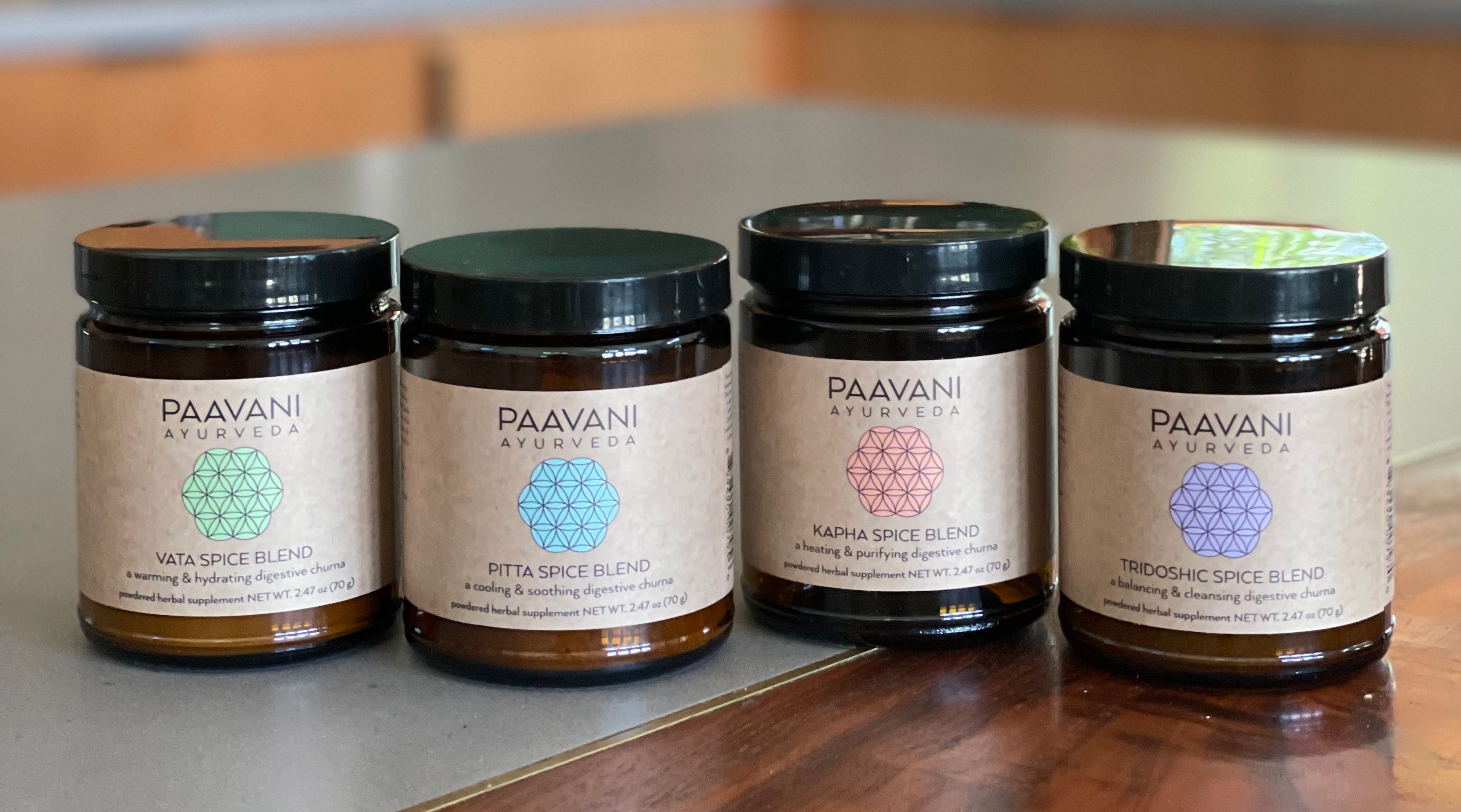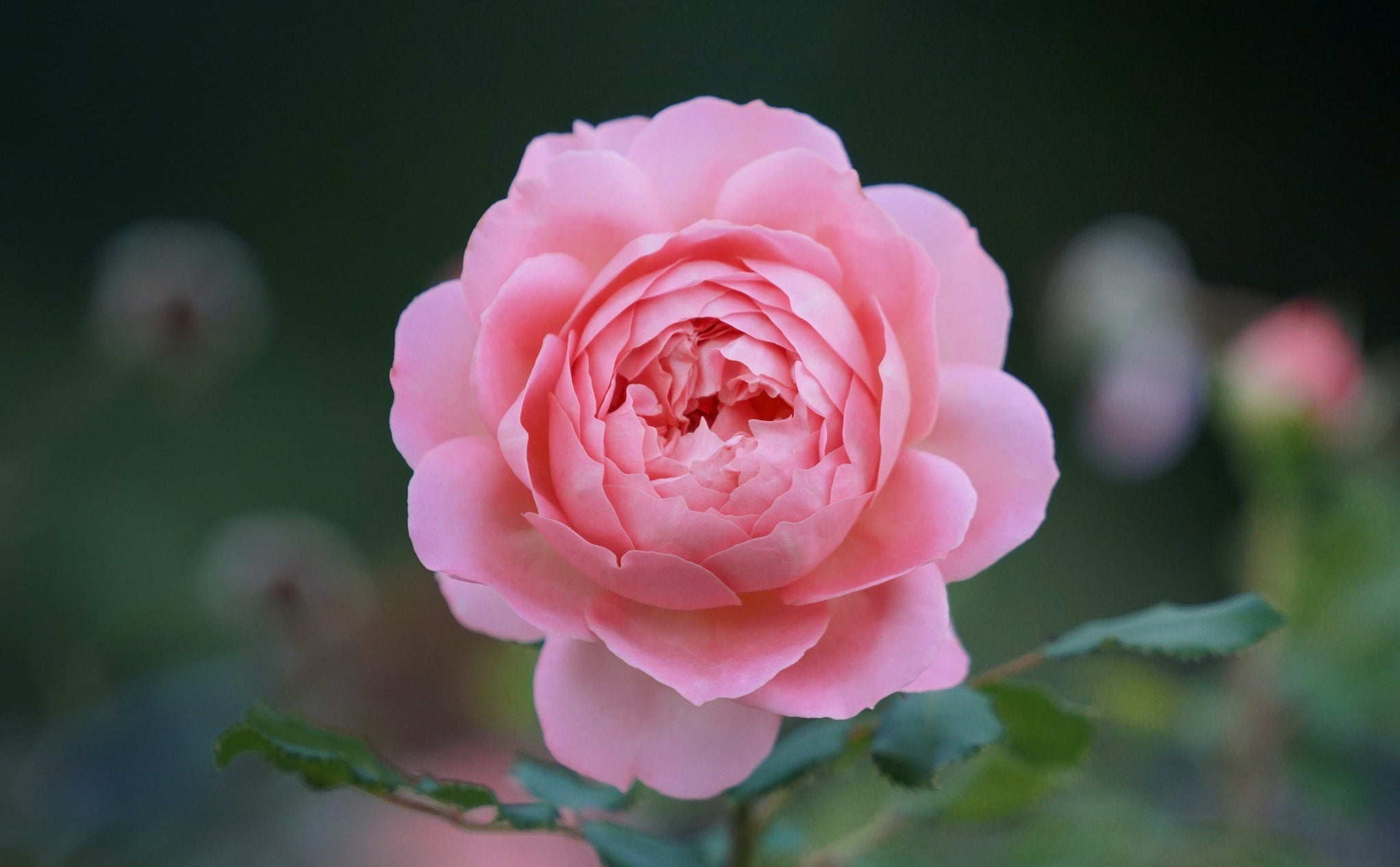
Pranayama for Balancing Pitta Dosha
Summer, also known as pitta season in Ayurveda, is in full swing for those of us living in the Northern Hemisphere and, needless to say, it’s hot! As the temperatures continue to rise, it is normal for us all to seek ways to cool down so that the pitta within can stay balanced, calm and collected. Thankfully, Ayurveda has a plethora of remedies that can help counterbalance the heat of the summertime and therefore keep pitta in check. From incorporating soothing digestive spices like our Pitta Spice Blend, sipping on a hibiscus mint tea like our Cool & Calm Blend Tea, infusing water with the fresh herbs and fruits of the season, to expelling excessive heat through a pitta pacifying yoga practice, Ayurveda and its traditional healing rituals are ready to serve the needs of excess heat in the summertime.
One Ayurvedic ritual that we especially love to utilize during the long, hot days of summer is cooling and nourishing pranayama, or yogic breathing exercises. These exercises are helpful tools that will quickly cool the body and calm the mind and can be practiced anywhere. Thus, today we are thrilled to share with you a pranayama sequence designed specifically to meet the needs of anyone experiencing excess pitta. Since pitta is comprised of primarily fire with a little bit of water, it is considered to be hot, sharp, dry, rough and light and will show up as a symptom with these qualities. Some signs that pitta dosha is in excess and thus out of balance within your body and mind include:
- inflammation
- hyperacidity
- loose stools
- insatiable appetite
- intensity
- bloodshot eyes
- sharp/rude communication with other
- feeling hot
- sensitive skin
- combination skin (oily + dry)
- acne &/or blemishes, especially in the T-zone areas
- burn out
- overly competitive
- angry
- irritable
- critical
If you can currently relate with any of the above symptoms, pitta balancing pranayama could be just what the Ayurvedic doctor ordered! The focus of pitta pacifying pranayama is to cultivate a cooling, soothing, grounding and nourishing energy in order to reduce the hot, sharp and fiery nature that excess pitta can generate. Our pitta balancing pranayama go-tos are Nadi Shodhana, Sheetali and Sheetkari.
Before you begin your pranayama, Ayurveda recommends the rituals of neti and nasya in order to enhance the flow of prana and your ability to take a full deep breath. Neti is the practice of cleansing the nasal passageways with a blend of warm, purified water and salt. Our PAAVANI Neti Salt blends Himalayan salt with essential oils of eucalyptus, peppermint, rosemary and tea tree, to provide you with an aromatic saline solution for your neti ritual. After you neti remember to always follow with nasya. Nasya is the practice of applying herbal infused Nose Oil into the nasal passageways in order to further clear, hydrate and protect the nose from environmental pollutants and pathogens. Learn more about the benefits of neti and nasya on our blog, Neti & Nasya: Ayurvedic Practices for Optimal Wellness.
Nadi Shodhana
Nadi Shodhana, also known as Alternate Nostril Breathing, is a tridoshic pranayama, meaning that it balances all three doshas- vata, pitta and kapha. It also purifies and restores balance to both the Pingala and Ida Nadis, or subtle energy channels of the body. The Pingala Nadi is an energy channel within the subtle body that is connected with solar or sun energy. It is present on the right side of the body and left side of the brain. When your Pingala Nadi is activated during Nadi Shodhana, divine masculine energy is stimulated. The Ida Nadi is an energy channel within the subtle body connected with lunar or moon energy. It is present on the left side of the body and right side of the brain. When your Ida Nadi is activated during Nadi Shodhana, divine feminine energy is enhanced. In short, the practice of Nadi Shodhana helps to gently stimulate, cleanse and balance the male and female energies inherent within each of our bodies. It also balances both hemispheres of the brain and removes blockages to flow in the subtle energy channels.
Benefits of Nadi Shodhana for Pitta Dosha
- Calms the mind
- Balances heated emotions
- Soothes the nervous system
- Brings in prana rich oxygen
- Eases pent up tension in the body & mind
- Increases harmony
How to Do Nadi Shodhana
- Find sukhasana or a comfortable seated position on the floor, preferably with your pelvis elevated by one or two folded blankets underneath your sitting bones. This method helps ensure your spine is straight and you are in proper alignment.
- Close your eyes and take 3 steady, deep breaths.
- Bring your left hand to chin mudra by placing your thumb and index finger together. Rest the back of your left palm on your left thigh.
- Bring your right hand to vishnu mudra by curling your index and middle fingers down into your right palm while your thumb, ring finger and pinky finger stay extended.
- Draw your right hand up to your right nostril, gently close your right nostril with your thumb.
- Slowly draw air into your left nostril for 3 seconds.
- Retain the breath by keeping your right nostril closed with your thumb and gently close the left nostril with your ring and pinky finger. Retain or hold the breath for 9 seconds.
- Keep your left nostril closed with your ring finger and release your thumb to slowly exhale out through the right nostril for 6 seconds.
- Keep your left nostril closed and slowly inhale through your right nostril for 3 seconds.
- Retain the breath by keeping your left nostril closed with your ring and pinky finger and gently close your right nostril with your thumb. Retain or hold the breath for 9 seconds.
- Keep your right nostril closed and release your ring and pinky finger to slowly exhale out through your left nostril for 6 seconds.
- This completes one full round of Nadi Shodhana.
- Repeat this process for 3-10 rounds.
- Remember to keep the breath fluid, smooth, relaxed and gentle.

How long should Nadi Shodhana take?
We recommend 3-10 rounds of this pranayama each day. A few rounds can take around 5 minutes, which will provide benefits to the body and mind; however, practicing for longer, up to 20 to 30 minutes per day, will enhance its benefits.
Contraindications for Nadi Shodhana
Nadi Shodhana is not recommended if you have recently undergone abdominal, brain or heart surgery. Also, if you are experiencing discomfort in the exercise, reduce the duration of the breath.
Sheetali
Sheetali, also known as Cooling Breath, is a powerful way to restore healthy levels of pitta within the body. On a hot summer day when you’ve been soaking up the sun and begin to feel overheated, when you’ve been physically exerting yourself in some way or if you find yourself in the midst of a heated conversation, call upon Sheetali to help reduce your body temperature and get your mind and body back into balance.
Benefits of Sheetali for Pitta Dosha
- Soothes inflammation
- Balances heated emotions like anger & irritability
- Reduces body temperature
- Decreases inflammation
- Restores a healthy flow of prana (life force energy)
- Replenishes the bodily tissues
- Reduces blood pressure
- Quenches thirst
- Promotes healthy digestion by restoring agni (digestive fire)
How to Do Sheetali
- Find sukhasana or a comfortable seated position on the floor, preferably with your pelvis elevated by one or two folded blankets underneath your sitting bones. This method helps ensure your spine is straight and you are in proper alignment.
- Close your eyes and take 3 steady, deep breaths.
- Bring both hands to chin mudra by placing your thumbs and index fingers together. Rest the back of your left palm on your left thigh and the back of your right palm on your right thigh.
- Extend your tongue out of your mouth and curl the tongue so it is the shape of a hard taco shell, making a straw to sip in air.
- Slowly inhale through the mouth, sipping in air through your tongue, drawing in a cooling breath.
- Once the inhale is complete, draw your tongue back into your mouth and retain the breath for as long as is comfortable.
- Exhale out through the nose, expelling any excess heat or pitta from the body and mind.
- Repeat for several rounds until you have completed 6-10 rounds of Sheetali.
- Once your practice is complete, sit and observe the peace, cool and calm you have cultivated.

Sheetkari
If you are unable to curl your tongue for Sheetali pranayama, need not fear! Ayurveda and Yoga has got you covered with Sheetkari or Hissing Breath. Sheetkari has the same effect on the body and mind as Sheetali and all the directions on how to do this breath are exactly the same as Sheetali with one minor difference. Rather than extend your tongue out of your mouth and curl it like a hard shelled taco, simply rest your tongue near your bottom teeth and touch the top and bottom teeth together, gently closing your jaw. Open or part your lips away from one another and breathe in through your mouth. This should initiate a hissing sound. And that’s it! You are now practicing Sheetkari and bringing in a cooling, pitta reducing breath.
Contraindications for Sheetali & Sheetkari
Both Sheetali and Sheetkari are not recommended in the winter season, if you are feeling cold or are sick, if you have low blood pressure, if you are experiencing constipation or if you suffer from asthma (because these pranayamas cool and therefore restrict the air passages).
Create your Chill Space
In the hot, hectic and sometimes wild days of summer, we hope that you etch out sacred time and space to check in with your body, heart and mind. May this pitta balancing pranayama sequence help to foster deep roots of self-love and self-care to carry you through these heated days. Namaste to you and yours.





Leave a comment
This site is protected by hCaptcha and the hCaptcha Privacy Policy and Terms of Service apply.